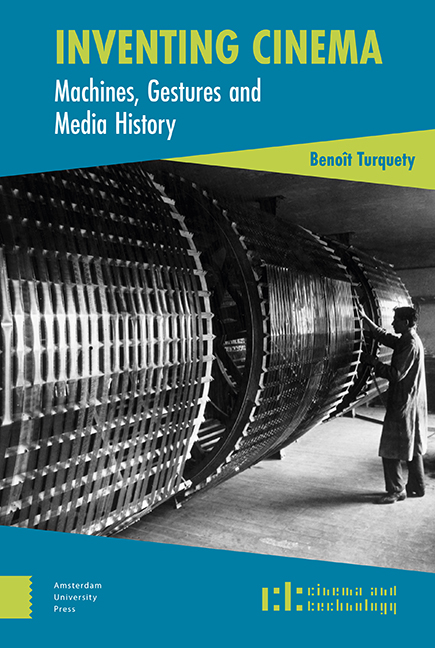Book contents
- Frontmatter
- Dedication
- Contents
- Acknowledgements
- Introduction: The Problems of Digital Cinema
- 1 The Why and How of Machines
- 2 Invention, Innovation, History
- 3 The Invention of the Problem
- 4 The Invention of the Cinématographe
- 5 ‘Natural Colour Kinematography’, a New Cinema Invention : Kinemacolor, Technical Network and Commercial Policies
- 6 Epilogue: From the Trembling of Film to the Stability of the Digital
- Bibliography
- Index
4 - The Invention of the Cinématographe
Published online by Cambridge University Press: 21 November 2020
- Frontmatter
- Dedication
- Contents
- Acknowledgements
- Introduction: The Problems of Digital Cinema
- 1 The Why and How of Machines
- 2 Invention, Innovation, History
- 3 The Invention of the Problem
- 4 The Invention of the Cinématographe
- 5 ‘Natural Colour Kinematography’, a New Cinema Invention : Kinemacolor, Technical Network and Commercial Policies
- 6 Epilogue: From the Trembling of Film to the Stability of the Digital
- Bibliography
- Index
Summary
Abstract
When the Lumière Cinématographe was invented, was cinema invented too? And was the Cinématographe a true invention, or only an innovation within an ensemble of machines already established by 1895? These are certainly among the most debated questions in the historiography of cinema, and in its technological historiography in particular. They reappeared on a regular basis, in particular at the time of ‘anniversaries’ of the invention (1925, 1935, etc.), before being revived for other reasons by the transformation to digital encoding. This chapter reconsiders the Cinématographe's status within the history of film technology, questioning whether it is an invention and where its newness may be situated. From its cams to the evolutions of its shutter, from its crank to its reversibility, from its relations with amateur photography to its relations with Marey's chronophotography, the famous Lumière machine is reconsidered within its cultural, scientif ic, and technological contexts.
Keywords: Cinématographe, Louis Lumière, Thomas Edison, film technology, film camera, film historiography.
The Cinématographe and the Question of Invention
When the Lumière Cinématographe was invented, was cinema invented too? And was the Cinématographe a true invention, or only an innovation within an ensemble of machines already well in place by 1895? These are certainly among the most debated questions in the historiography of cinema, and in its technological historiography in particular. They reappeared on a regular basis, in particular at the time of ‘anniversaries’ of the invention (1925, 1935, etc.), before being revived for other reasons by the transformation to digital encoding.
An initial response to these questions has been proposed, for example, by André Gaudreault in his article ‘On Some Limitations of the Definition of the Dispositive “Cinema”‘: it points out the indisputable difference between the cultural phenomenon cinema and the Cinématographe (Illus. 26), which is, ‘basically and quite simply […] only […] a machine to shoot views – extraordinary and brilliantly designed, to be sure, but a machine all the same.’ When cinema was invented is essentially a poor question, a false problem: ‘Who invented cinema? Answer: the cinema cannot be invented (there is no patent to be registered): it becomes established, gradually and collectively’.
- Type
- Chapter
- Information
- Inventing CinemaMachines, Gestures and Media History, pp. 151 - 208Publisher: Amsterdam University PressPrint publication year: 2019



